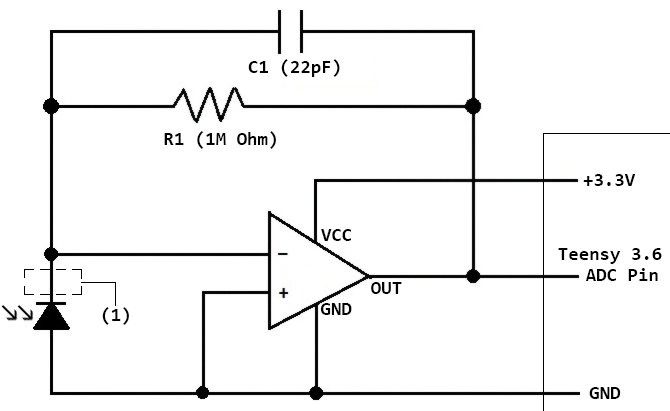I am new to analogue electronics and I am still learning about op-amps.
I use the most common circuit for amplifying a photodiode's signal to measure it with an ADC:

Amplification gain is 1M, the 22pF cap in parallel is for damping oscillating noise when the impulse comes in. I got some 50Hz noise in the signal due to the diode's cable is a .5 meters long flat ribbon cable, that's a problem, but not for this thread (if anyone knows how to filter that I will listen ;) ).
Now, when I touch the solder joint on the output of the diode (1), the 50Hz noise gets massively amplified. I don't want this to be gone, it will be isolated later, but I want to know why.
My guesses:
a) I'm a big resistor, adding additional resistance to R1 (1M) and so increasing the gain of the amplifier (keyword biopotential)
b) I'm a big antenna, receiving 50Hz noise of my surroundings and the op-amp amplifies that, so the signals do have different sources.
Thanks for any information!
Some background: I'm a computer science master student writing my thesis about hand gesture detection with infrared measurements through the skin, therefore the measured signals are rather small and need amplification.
[edit]
I was able to measure my own body's 50Hz signal with my oscilloscope, thank you all!


